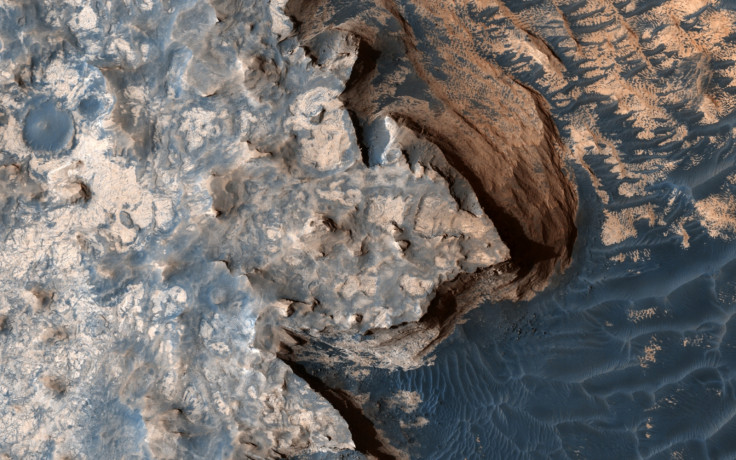Martian landscapes were formed by boiling water 'levitating' sand off its surface
Violently boiling water, aided by low pressure and a thin atmosphere made it possible for Mars to get its dunes and gullies, researchers say.

Researchers have found that the vast and varying landscapes on Mars were formed by water on the surface boiling violently and then moving large amounts of sand and other material by levitating it off the surface.
Scientists at The Open University (OU), England, have discovered that the surface of Mars once contained a small quantity of water which was subject to the Red Planet's thin atmosphere that registers around 7mbar — in contrast atmospheric pressure at sea level on Earth is around 1,000 mbar. This, along with a warm climate, caused the water on the surface of the planet to boil violently.
This boiling caused sand, mud and other surface features to be displaced in large quantities.
Simulations run by the OU's specialised instruments like the Mars Simulation Chamber reportedly helped the team come to this conclusion. It has been a matter of debate among astronomers about how certain land features were formed on Mars. They appeared to be displaced by large amounts of liquid water, similar to the way certain features on Earth are formed, but Mars did not seem to ever have enough water to be able to do this, notes a report by Science Daily.
However, it was possible for Mars' large dune flows, gullies and other features characteristic of the Red Planet to be formed with a relatively small quantity of water, because of the combination of factors mentioned above.
"Whilst planetary scientists already know that the surface of Mars has 'mass-wasting' features —such as dune flows, gullies, and recurring slope lineae — which occur as a result of sediment transportation down a slope, the debate about what is forming them continues.
"Our research has discovered that this levitation effect caused by boiling water under low pressure enables the rapid transport of sand and sediment across the surface. This is a new geological phenomenon, which doesn't happen on Earth, and could be vital to understanding similar processes on other planetary surfaces," said Dr Jan Raack at The Open University, lead author of the research.
He added that the role of water, even in relatively small quantities, in creating the varying landscapes of Mars has so far been greatly underestimated. He also added that more research on this levitating effect has to be carried out to better understand our closest planetary neighbour.






















